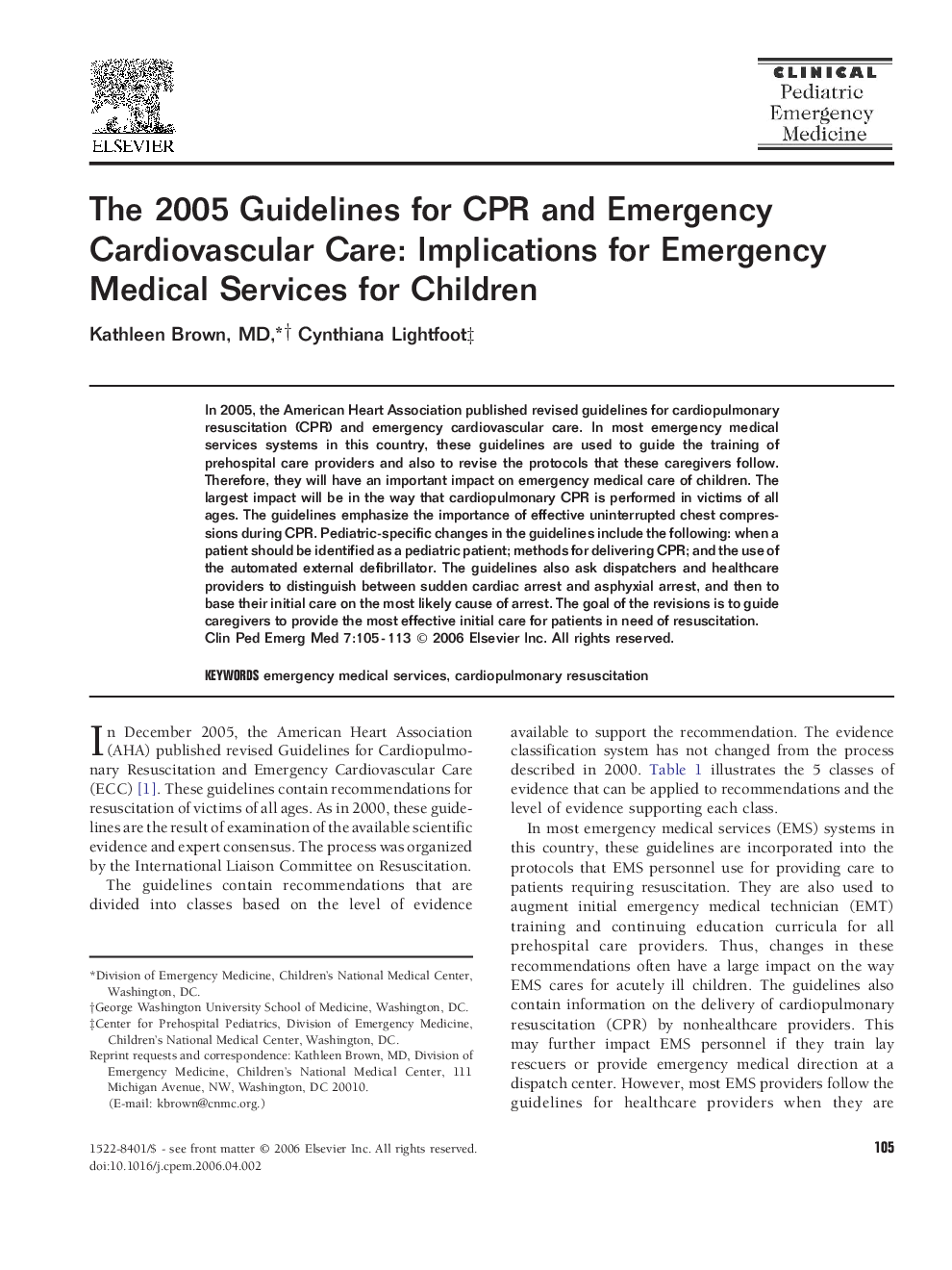| Article ID | Journal | Published Year | Pages | File Type |
|---|---|---|---|---|
| 3236348 | Clinical Pediatric Emergency Medicine | 2006 | 9 Pages |
Abstract
In 2005, the American Heart Association published revised guidelines for cardiopulmonary resuscitation (CPR) and emergency cardiovascular care. In most emergency medical services systems in this country, these guidelines are used to guide the training of prehospital care providers and also to revise the protocols that these caregivers follow. Therefore, they will have an important impact on emergency medical care of children. The largest impact will be in the way that cardiopulmonary CPR is performed in victims of all ages. The guidelines emphasize the importance of effective uninterrupted chest compressions during CPR. Pediatric-specific changes in the guidelines include the following: when a patient should be identified as a pediatric patient; methods for delivering CPR; and the use of the automated external defibrillator. The guidelines also ask dispatchers and healthcare providers to distinguish between sudden cardiac arrest and asphyxial arrest, and then to base their initial care on the most likely cause of arrest. The goal of the revisions is to guide caregivers to provide the most effective initial care for patients in need of resuscitation.
Related Topics
Health Sciences
Medicine and Dentistry
Emergency Medicine
Authors
Kathleen MD, Cynthiana NREMT-P,
